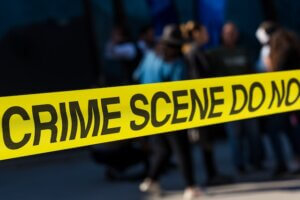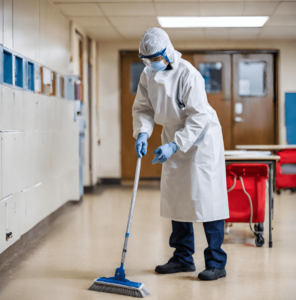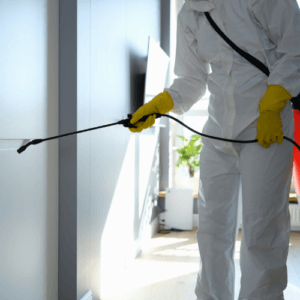Safety Procedures in Trauma Cleaning: Ensuring a Safe Environment
Safety Procedures in Trauma Cleaning: Ensuring a Safe Environment
Summary
The article discusses safety procedures in trauma cleaning to ensure a clean and safe environment. It emphasises the importance of personal protective equipment (PPE), proper training, risk assessment, secure containment, and ongoing safety monitoring. Trauma cleaning involves cleaning and decontaminating spaces where traumatic events like accidents or crimes have occurred, with a focus on biohazard removal. The article also provides answers to FAQs related to trauma cleaning.
When it comes to trauma cleaning, there is no room for error. This critical service involves the thorough cleanup and decontamination of spaces where traumatic events have occurred, such as crime scenes, accidents, and unattended deaths. The primary goal is to restore the affected area to a safe and habitable condition, free from biohazards and potential health risks. In this comprehensive guide, we will delve into the safety procedures in trauma cleaning that are crucial for ensuring the well-being of both the cleaning professionals and the community.
Personal Protective Equipment (PPE)
In the realm of trauma cleaning, personal protective equipment (PPE) is the first line of defence. Cleaning professionals must don appropriate gear to shield themselves from potential biohazards, including bloodborne pathogens and other contaminants.
This typically includes:
Disposable Gloves: High-quality disposable gloves are worn to prevent direct contact with hazardous materials. They are discarded after each use to avoid cross-contamination.
Full-Body Suits: Coveralls or full-body suits made from impermeable materials provide complete protection against fluids and contaminants.
Respirators: Depending on the situation, respirators with appropriate filters may be necessary to safeguard against airborne particles and noxious odours.
Safety Goggles: Protective eyewear is essential to shield the eyes from splashes and airborne particles that could pose risks to ocular health.
Footwear Covers: Disposable booties or shoe covers help prevent tracking contaminants from one area to another.
Proper Training and Certification
Safety in trauma cleaning starts with education and training. Cleaning professionals should undergo comprehensive training programs and obtain relevant certifications.
These programs cover essential topics such as:
Biohazardous Waste Handling: Proper handling, containment, and disposal of biohazardous materials are critical to prevent the spread of infections.
Chemical Safety: Training on the safe use and handling of cleaning chemicals is imperative to avoid accidents and chemical exposure.
Infection Control: Understanding infection control measures is essential for preventing the transmission of diseases.
Risk Assessment and Site Evaluation
Before commencing any cleanup operation, a thorough risk assessment and site evaluation are conducted.
This involves:
Identifying Hazards: Identifying potential hazards and assessing their level of risk is the first step. Hazards may include bloodborne pathogens, sharp objects, or chemical residues.
Determining Cleanup Scope: Evaluating the extent of contamination and the necessary cleanup scope helps in planning and resource allocation.
Safety Protocols: Establishing safety protocols tailored to the specific situation is crucial for minimising risks during cleanup.
Secure Containment and Disposal
Safe containment and disposal of biohazardous materials are paramount in trauma cleaning. This involves:
Proper Packaging: Materials contaminated with blood or bodily fluids are sealed in leak-proof, biohazard-labelled containers.
Legal Disposal: Following local regulations and guidelines for the safe disposal of biohazardous waste is essential to prevent legal issues.
Decontamination: After waste removal, thorough decontamination of affected surfaces is performed to ensure no residual contaminants remain.
Ongoing Safety Monitoring
Safety procedures in trauma cleaning extend beyond the cleanup itself. Ongoing safety monitoring is crucial, and it includes:
Post-Cleanup Assessment: After the cleanup is complete, a final assessment is conducted to ensure that all safety measures have been followed.
Health Monitoring: Cleaning professionals may undergo health monitoring to detect and address any potential health issues resulting from exposure to biohazards.
Training Updates: Regular training updates and refresher courses are essential to stay current with safety protocols and best practices.
In conclusion, safety procedures in trauma cleaning are non-negotiable. Cleaning professionals, often working in emotionally charged and challenging environments, must prioritise safety to protect themselves, their clients, and the wider community. By adhering to stringent safety protocols, proper training, and the use of personal protective equipment, trauma cleaning professionals can effectively mitigate risks and ensure a clean and safe environment.
FAQs
What is trauma cleaning?
Trauma cleaning, also known as biohazard cleaning or crime scene cleaning, is a specialised service that involves the thorough cleaning, disinfection, and decontamination of spaces where traumatic events such as accidents, crimes, or unattended deaths have occurred. The goal is to restore the area to a safe and habitable condition.
When is trauma cleaning needed?
Trauma cleaning is needed in situations where bodily fluids, blood, or other biohazardous materials are present. This includes crime scenes, suicide scenes, unattended deaths, accidents, and incidents involving infectious diseases. It is essential to hire professionals for trauma cleaning to ensure proper sanitation and safety.
Is trauma cleaning covered by insurance?
Whether trauma cleaning is covered by insurance depends on your specific insurance policy. In some cases, homeowner’s insurance or commercial property insurance may cover the costs associated with trauma cleaning if the event that caused the trauma falls within the policy’s terms, such as a crime or accident. It’s essential to contact your insurance provider and review your policy to determine if you have coverage for trauma cleaning services.
Why Choose AllAces?
AllAces Cleaning & Restoration has more than 35 years of industry experience offering extensive trauma cleaning services across Brisbane, Sydney, Melbourne, and surrounds. Our IICRC-certified technicians utilise the latest technology and equipment to ensure the return of a safe and habitable space.



